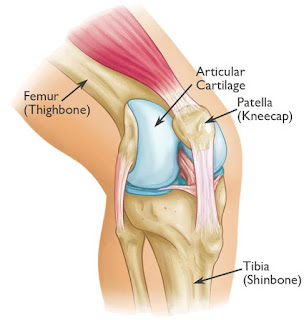DUPUYTREN’S CONTRACTURE
DUPUYTREN’S CONTRACTURE
INTRODUCTION:
Dupuytren’s contracture is
an abnormal thickening of the tissue just beneath the skin. This thickening
occurs in the palm and can extend into the fingers. Firm pits, bumps and cords
(thick lines) can develop and cause the fingers to bend into the palm.This condition may also be known as Dupuytren’s Disease.
Occasionally, the disease will cause thickening on top of the knuckles or cause
lumps and cords on the soles of the feet (plantar fibromatosis).
ANATOMY:
SYMPTOMS:
A Dupuytren's contracture typically progresses very
slowly, over a period of years. Signs and symptoms of the condition may
include:
Ø
Nodules: You may develop one or more small
lumps, or nodules, in the palm of your hand. These nodules are typically fixed
to the overlying skin. Initially, the nodules may feel tender but, over time,
this tenderness usually goes away. In some cases, there can be
"pitting" or deep indentation of the skin near the nodules.
Ø
Cords: The nodules may thicken and contract,
contributing to the formation of dense and tough cords of tissue under the
skin. These cords can restrict or tether the fingers and thumb from
straightening or from spreading apart.
Ø
Contractures: As the tissue under the skin tightens,
one or more of your fingers may be pulled toward your palm and may be
restricted from spreading apart. The ring and little fingers are most commonly
affected, but any or all of the fingers can be involved, even the thumb. Most
commonly, the first joint (knuckle joint) of the finger is affected, but the
other joints may also be involved.
As
the bend in your finger increases, it may be hard to straighten it fully. It
may be difficult to grasp large objects, put your hand in your pocket, or
perform other simple activities.
GRADES/STAGES:
EXAMINATION:
Doctor will talk with you about your
general health and medical history and ask about your symptoms. Because
Dupuytren's can run in families, doctor may ask if you are aware of any relatives
that have the disease.
Doctor will then carefully examine
your fingers and hand. During the exam, he will:
- Record the location of nodules and cords on your
palm.
- Measure the range of motion of your fingers and
thumb.
- Test the feeling in your fingers and thumb.
- In some cases, document the appearance of your hand with clinical photographs.
These measurements will be compared
with other measurements taken throughout your treatment to determine whether
the condition is progressing over time.
TREATMENT:
Although it varies from patient to patient, Dupuytren's
usually progresses very slowly and may not become troublesome for many years.
In fact, for some patients, the condition may never progress beyond developing
lumps in the palm.
If the condition progresses, your doctor may first
recommend nonsurgical treatment to help slow the disease.
Ø Non-Surgical Treatment:
·
Steroid
Injection.
·
Splinting.
Ø Surgical Treatment:
The surgical procedures most commonly performed for
Dupuytren's contracture are:
·
Fasciotomy
·
Subtotal palmar fasciectomy.
--THE END--







Comments
Post a Comment
Thank you for your kind words and your support.